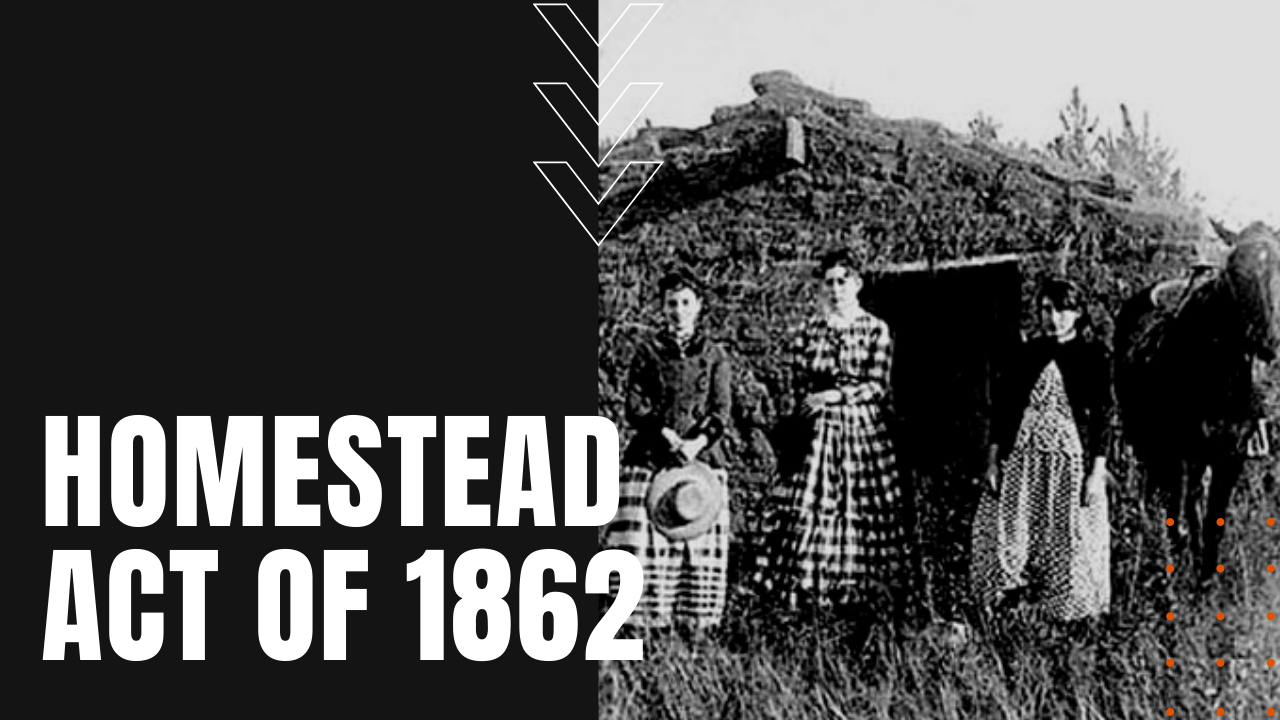Homestead Act of 1862

During a February 1861 speech in Ohio, President Abraham Lincoln said that a homestead act was “worthy of consideration and that the wildlands of the country should be distributed so that every man should have the means and opportunity of benefiting his condition.”
At Lincoln’s behest, Congress signed the Homestead Act into law on May 20th, 1862, which would stand for the next 124 years, resulting in 10% of the nation’s land claimed and settled by American pioneers and speculators.
What is the Homestead Act?
Open to all U.S. citizens and prospective citizens, the Homestead Act allowed settlers to obtain no more than 160 acres of land, which eventually saw 1.6 million deeds awarded, in the process forcing Native Americans onto designated reservations to make room for the flood of western-bound settlers. Homesteaders paid $12 upfront—$10 for a temporary claim on their chosen land, plus a $2 commission to a land agent—followed by a final $6 payment for a clear title after certain conditions had been met.
Before a clear land deed could be obtained, homesteaders required two neighbors or friends to attest that the homesteader in question was 21 years of age, had lived continuously on the land for five years, while building a home and other structures to improve the land. Union soldiers, on the other hand, could circumvent and shorten the five-year residency requirement by serving in the Civil War. Land titles could also be purchased outright for $1.25 per acre after six months of verified residency.
What did the Homestead Act Do?
In the end, due to ambiguous clauses in the Homestead Act and its congressional revisions, most of the land went to land speculators, cattlemen, miners, lumbermen and railroads, which was allowed to flourish due to a shortage of investigators.
Of the 500 million acres dispersed by the General Land Office between 1862 and 1904, only 80 million acres went to homesteaders. For the most part, homesteading ended with the signing of the Taylor Grazing Act of 1934, while the Homestead Act was finally repealed in 1976, with the signing of the Federal Land Policy and Management Act, which mandated that “public lands be retained by the Federal government. Homesteading was allowed to continue in Alaska for a decade more, making the Homestead Act an important instrument in westward American expansion.
